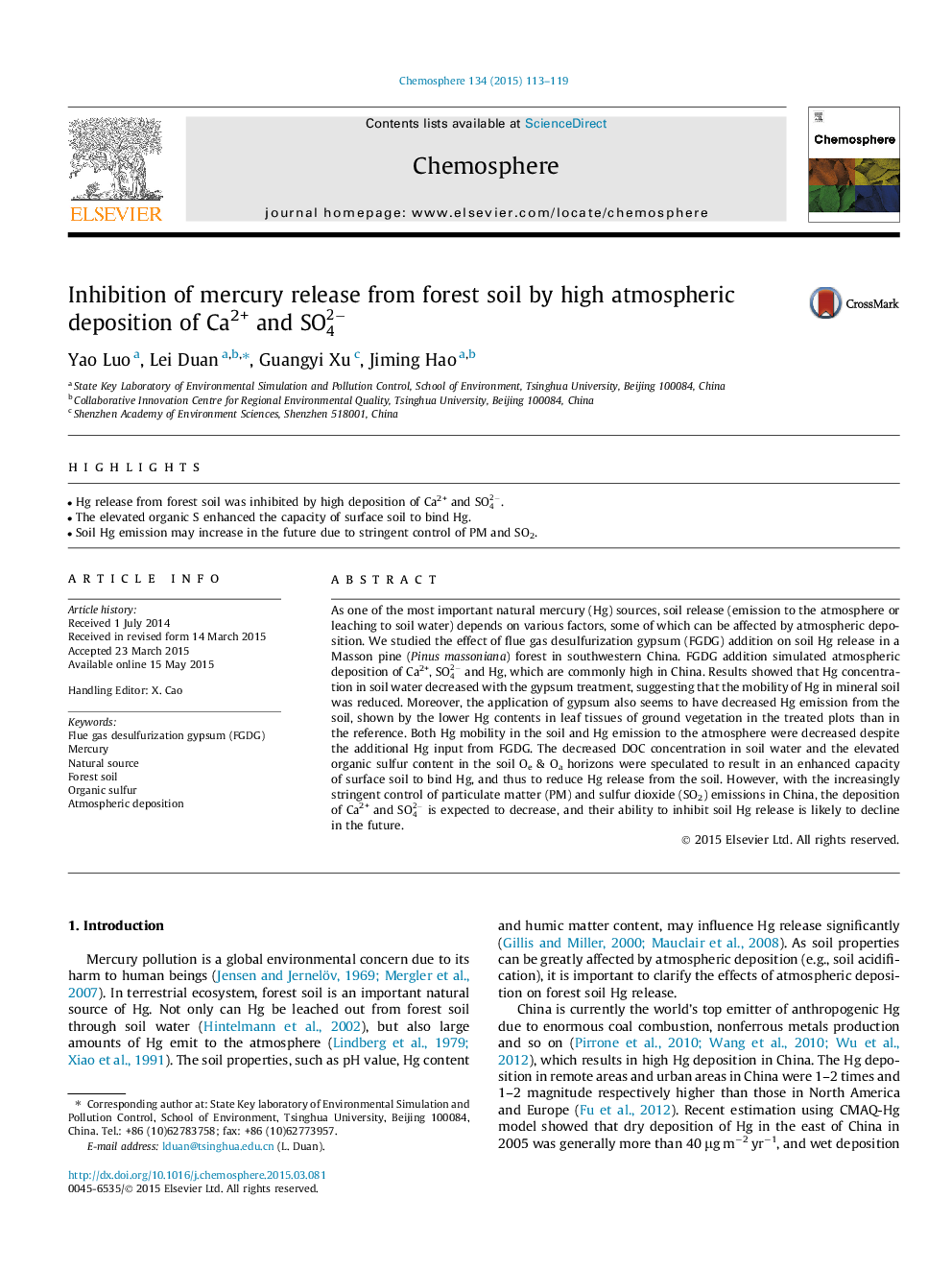| Article ID | Journal | Published Year | Pages | File Type |
|---|---|---|---|---|
| 6307624 | Chemosphere | 2015 | 7 Pages |
Abstract
As one of the most important natural mercury (Hg) sources, soil release (emission to the atmosphere or leaching to soil water) depends on various factors, some of which can be affected by atmospheric deposition. We studied the effect of flue gas desulfurization gypsum (FGDG) addition on soil Hg release in a Masson pine (Pinus massoniana) forest in southwestern China. FGDG addition simulated atmospheric deposition of Ca2+, SO42- and Hg, which are commonly high in China. Results showed that Hg concentration in soil water decreased with the gypsum treatment, suggesting that the mobility of Hg in mineral soil was reduced. Moreover, the application of gypsum also seems to have decreased Hg emission from the soil, shown by the lower Hg contents in leaf tissues of ground vegetation in the treated plots than in the reference. Both Hg mobility in the soil and Hg emission to the atmosphere were decreased despite the additional Hg input from FGDG. The decreased DOC concentration in soil water and the elevated organic sulfur content in the soil Oe & Oa horizons were speculated to result in an enhanced capacity of surface soil to bind Hg, and thus to reduce Hg release from the soil. However, with the increasingly stringent control of particulate matter (PM) and sulfur dioxide (SO2) emissions in China, the deposition of Ca2+ and SO42- is expected to decrease, and their ability to inhibit soil Hg release is likely to decline in the future.
Related Topics
Life Sciences
Environmental Science
Environmental Chemistry
Authors
Yao Luo, Lei Duan, Guangyi Xu, Jiming Hao,
